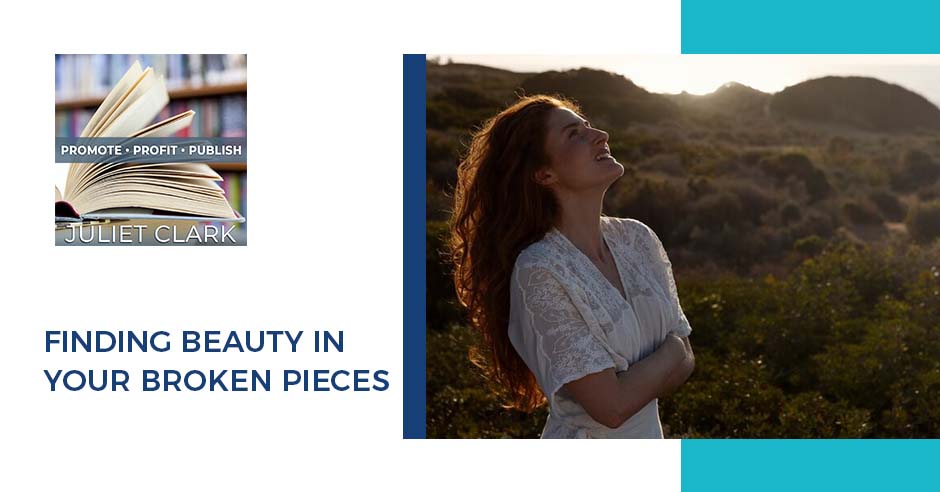
Changing a relationship begins with seeing the beauty in your own flaws. Self-love is the catalyst for the growth of shared love. In this emotional episode, Samantha Kaaua, founder of The GEMMS® with Samantha Kaaua and the creator of the Inner Mosaic® method, talks about finding beauty in your own broken pieces. She shares her journey, from being on the brink of divorce to a thriving marriage and career. She explains the role our childhood plays in the adults we become. With raw honesty, she reveals how her brink of divorce moment led her into the world of family therapy. Her mission? To save not just her marriage, but millions of others too. Tune in now!
—
Watch the episode here
Listen to the podcast here
Finding Beauty In Your Broken Pieces
I’m excited to have our second book release of 2024 on the show. The author is an amazing human being and her book, Finding Beauty In Your Broken Pieces is going to be part of our book club starting February 15th, 2024. If you haven’t joined our book club, I encourage you to go over to BreakthroughAuthorsBookClub.com. It’s an Amazon book club. It’s free to join. Samantha’s book will be the featured book from February 15th until the end of February 2024. Remember to go over there and join. It’s free.
As we get going here too, we’re going to be asking some questions inside the book club about what kinds of books you like and probably giving away some free books too. If you’re an avid reader, come on over. It’s business books and professional books. We don’t have much fiction there, which I’m a big fiction fan so I belong to another book club over there that is a who-done-it place.
In this episode, our guest is Samantha Kaaua. She is a professional keynote speaker, author, and esteemed marriage coach recognized for her counterculture approach to transforming relationships. As the Founder of The GEMMS with Samantha Kaaua and the creator of the Inner Mosaic Method, she is a beacon for individuals yearning to break through negative family patterns and lay the foundations for loving and trusting relationships. Stay tuned for my interview with Samantha.
—
Samantha, welcome. It’s great to have you here.
It’s great to be here. Thanks for having me.
I am excited about your book. It is so well written with such great information. How did you get into marriage, family counseling, and everything that you do?
I like to say that I was born into it. My parents were divorced and separated before I was one. I was a product of divorce in my family. My grandparents were divorced on both sides, aunties and uncles. It was prevalent in my family. I had sworn to myself as a little girl that I would never get divorced. It wasn’t the most horrible experience ever. At the same time, I saw all these kids around me growing up with parents that were together. I said, “I’m not going to get divorced like the rest of my family, especially if I have kids.” I declared that at such a young age.
Fast forward to marrying my high school sweetheart ten years into that relationship, I found myself right where I swore I wouldn’t be. I was also in school at the time in my Master’s program to become a marriage and family therapist. It’s mainly because I have a lot of interest in supporting people and helping people. Therapy had been a default option because I was always the go-to person to talk about people’s problems. I went into psychology. I didn’t get into the Doctorate of Psychology program and they offered me marriage and family therapy. In the middle of that program, I found myself on the brink of divorce. It was destiny that brought me to this place for sure.
That’s a lot of divorce. I grew up in a household, and don’t get me wrong, we had plenty of dysfunction but my parents before my dad died had been married for 48 years. There was a ton of dysfunction even within that family. As a grownup, I like to say that I messed my kids up in a different way than my parents messed me up.
Yes, we all do.
What prompted you to write a book about this topic?
I wanted to put my life’s work in writing and I wanted to impact more people than I knew I could individually. I am on a mission to help save ten million marriages. That was my next declaration after declaring I would never get a divorce. Once I saved my marriage, not once but twice, it became a life mission to help others to transform. The culture of marriage I feel is ready for an upgrade. The best way that I could think of doing it was to write a book and be able to disseminate this message across the world.
One of the things I love about your book is there is so much going on in the world, which is, “We’ve got problems but it’s not my fault. It’s all you.” Your book came in the door in December 2023 and then right after, two more came in about personal responsibility. I feel like that’s a trend that’s going forward and flipping the script. Talk a little bit about that. I’ve been through a divorce and that’s the go-to. “You are bad. You do this and that. I can’t change you.” We never stop and think about how can we change ourselves. If I change myself, will that dynamic change?
I do think that you’re right. The culture held onto that victim mentality. Not to say that many of the people I’m speaking about victimized themselves. It just was a cultural norm to look for the faults in others and look outside of ourselves for the problem as well as the solution. We were taught that if we don’t like what’s happening, then move on or do something different. It translated into, “Get out and get divorced. Find someone else. That person’s not right for you,” rather than being much more introspective and saying, “If this is not working and something is not right, then maybe there’s something in me that I can shift to influence and impact the relationship.”
That’s so new in our society. Although personal development and transformation have been around for a while, the translation into relationships has not begun yet. I want to translate all of those personal development and even spiritual development tools, techniques, and teachings into the relationships. I know that it’s not translated well yet because of our results. Our statistics still say that have more than a 50% divorce rate. Therefore, we know that although we’re working on ourselves, it’s not quite working in our relationships yet.
It does make sense but take those disempowering beliefs into your hands because a lot of times, it’s not that that other person needs to change, it’s that there are things within you that are being triggered. You will probably agree being married nobody on earth knows how to trigger you better than your spouse.
They’re our greatest gift and teacher but the greatest trigger.
Our partners are our greatest trigger, our greatest gift, and our greatest teacher. Share on XMy ex-husband came to town for Christmas 2023. The kids were all sick so he had to stay at my house. It was hilarious because I walked around the house saying, “That’s why I divorced you.” It’s hard sometimes because that person will do those little things that trigger you. When you step back and you heal yourself, you see that they haven’t changed. Tell us a little bit about that. When you heal yourself, what are you trying to heal?
The most challenging relationship in our life is a reflection of a belief that we carry around relationships. For example, my husband was lying to me for ten years about an addiction behind my back. It was a powerful moment when I realized that he was simply reflecting to me the mistrust that I had in myself inside of my relationships. I was told subconsciously almost this unspoken rule within my family that men can’t be trusted. They’re liars, cheaters, alcoholics, and addicts. These were all the experiences of my grandmother and my family in general. That is something that subconsciously got imprinted in me and then I projected onto my husband.
Granted he was having an addiction problem at the time but it was still lined up so perfectly to my belief system. When I started shifting my beliefs about relationships and how I can trust myself within a relationship no matter how the other person shows up, that’s when my marriage began to change. He began to look within himself for answers too. I stopped pointing at him and said, “You are the problem. Go fix yourself.” I said, “Hold on. I have things I can work on. Let me go focus on me.” What he was left with was himself. He couldn’t point the finger back at me and say, “You are nagging and you think that I’m the problem.” He couldn’t blame me anymore. That was a powerful moment for both of us because that’s when he started to change as well.

Save Marriage: When I started shifting my beliefs about relationships and how I can trust myself within a relationship no matter how the other person shows up, that’s when my marriage began to change.
I remember when I was married, it’s so funny and I don’t know if I’ve ever shared this with my audience, but I’ve always been very professionally driven. When you’re professionally driven as a woman, you’re proactive. When you’re at home doing the same things, you are nagging.
It can be perceived quite differently.
Your book breaks up into four different segments. Can you talk a little bit about each segment? When you’re talking about them, do you have to do them in a particular order? You put them in the book and I can see that there is a pattern to where you’re going with this.
There are two ways to look at this book. I had broken it up into sections or parts. It’s a three-part system called the Triple A’s of Transformation. The A’s are Awareness, Alignment, and Action. The book is separated into these different parts where you need to become aware of what’s happening, what’s going on within you, what’s yours, and what’s theirs. The awareness is super key. Alignment is aligning to your highest self, best self, and truest self, and showing up that way. Finally, take action because the first two are nothing without solidifying that into form, taking action, and in motion. That’s one of the processes that I share in that book.
The four-part one that you’re talking about in referencing is how I help people transform their relationships specifically. The first step is becoming the best you. Take the focus off of everyone else and everything else outside of yourself and look within to transform the relationships within you. In that first step of the four-part process of transforming your relationships, I introduced a model that I created, which is called Inner Mosaic. That helps you to better understand all the different parts of yourself, and relate, love, and trust all those different parts. Once we do that, we can begin the process outside of ourselves. That’s the first step.
The second one is navigating the storm. As a change agent because we all are, when you are the change in a system, it will cause some disruption. When that disruption begins, what happens is most people think that that’s evidence that it’s not working or that’s when most people decide to get the divorce because they’re like, “They’re not changing. They’re getting worse.” I always say that’s the good news and is a sign of transformation. Navigating the storm is important and where I come in most of the time to help people stay on course, stay steady, and not give up too soon.
The third would be communication, couples communication, or communication in general. Learn to communicate within yourself as well as outside of yourself, the other people in your life, or your spouse. Finally, the last one is the upward spiral. That is to share with everyone that the journey is continuous. We are constantly growing and going up this spiral of life. Sometimes it looks like we’re back to where we started.
The journey is continuous. We are constantly growing and going up this spiral of life. Share on X“Why are we back to this problem again? Yet again, here we are.” It’s not the same. We’re up one rung. We have grown and expanded ourselves. We’re back to a similar spot but one rung up. I like to say that that’s the process of life. We have these repeated lessons that show up in our lives and they get better and easier to deal with and work through. Those are the four steps I believe you were referencing. That comes out in the last section or the action section of the book.
When she’s talking about disruptions, I’ve gone through this process before I met Sam. I don’t know if you ever read Melody Beattie’s book about codependence but the disruption is that thing where there’s going to be that hard period where you have changed and other people push back because they don’t like that you’ve changed.
You’re disrupting homeostasis. It’s not a good thing for other people.
That’s a good sign though because that’s the point where you can decide, “Am I going to stay here or let that go?” That was mine. I had a situation where I changed that communication and said, “You go do whatever you want to do. You’re not going to listen to my input anyway. See you. Bye-bye.” It’s because I was exhausted. A month later, they came back and were like, “What we did didn’t work. Can we re-brainstorm this?” It was a wake-up call for me about, “You changed communication and the whole dynamic.” It doesn’t happen overnight either.
It takes time. One of the big lessons most of my clients are learning is patience. They’re like, “I want it to happen now.” I’m like, “It will happen sooner if you stop resisting and pushing it to happen.” I have seen my clients’ marriages transform fairly quickly but the moment they released that expectation or desire, the transformation began to happen for them. It’s ironic that the more we want it, the more contracted we become. We strangle that desire versus just letting go. I don’t know about you but I’ve experienced this and many of my clients experienced this. I was like, “Just let go.” They’re like, “No, I don’t want to let go.” The moment they let go, they’re like, “That worked.”
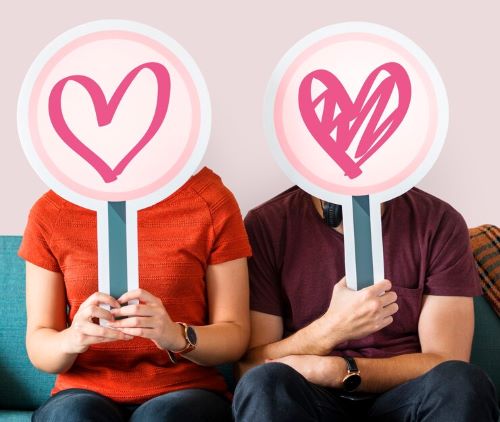
Save Marriage: It’s ironic that the more we want it, the more contracted we become, and we strangle that desire versus just letting go.
Letting go is hard. I don’t know how many times in my head I’m like, “Let this go.” That’s that point where you heal yourself because as you’re saying, “Let that go,” and then it’s not letting go so you have to start looking about why isn’t it letting go. “Why am I getting angry? Nobody’s doing anything to me. This is me getting angry because I can’t control this but I can’t let it go either.”
This has everything to do with trust and trusting ourselves that it’s not going to happen again and we’re not going to let it happen again. Anger and resentment are something we hold onto to protect ourselves from something happening again that we feel discomfort, sadness, anger, or hurt. It’s a defense mechanism. If we don’t learn to trust ourselves so that we can navigate any challenge that shows up for us in our relationships and life, then that’s when we will continue to hold onto and not be able to let go of.
The whole process, as I shared the Inner Mosaic Method, is to help you learn to trust and love all parts of yourself. In that, you can navigate almost anything. Whenever something shows up, you can check in with yourself and support yourself. I always tell my clients this and it’s funny. Some of my clients’ spouses are in their addiction. Other clients have infidelity or affairs or have stepped out. They’re so worried about it happening again. I said, “You can’t prevent it from happening again. The likelihood of you stopping it again is pretty much at zero. If they want to go do something, they will do it. They will execute that. On top of that, the more you focus on it, the more self-fulfilling prophecy you will have.”
What I tell them is, “Let’s get you to a place that if the worst case scenario were to happen, they were to cheat on you again, or they were to relapse in their addiction, you, having so much trust and faith in yourself, will be able to handle it at that moment. You’ll know confidently that this isn’t you. You are not the crazy one. You’re showing up as your best self. Things are not the same as before.” That’s exactly what happened to me. The first time we were on the brink of divorce in my marriage, I found out about my husband’s addiction and ten years of lies. I was so shattered and stopped trusting all parts of myself. I questioned and doubted my ability to read people and everything.
I worked on myself to a place where I started to love and trust all parts of myself, and then it happened again. My husband began to relapse. He went into a deep depression and was pointing the finger at me saying, “I don’t want to be with you. I don’t love you anymore. I want more freedom. You’re being controlling.” I got to pause at that moment, check in with myself, and say, “There are some tweaks that I can make right. There are some things I can own. This is the best version of me that I’ve ever been in. I know that I’m showing up as the best me. I trust that everything that I have been doing was not that person that you are still seeing and blaming.”
That was a powerful moment because all I was doing at that point was shining the mirror back on him and showing him that it wasn’t me who was crazy, naggy, or the problem anymore. Within six months, my husband was able to turn that around, get the help he needed, get back on track, and reignite our marriage. That was a powerful moment to be able to put all of these principles into practice in my relationship not once but twice.
I want to be transparent with people on here. Your book is about when the marriage can be saved, there are always situations where you’re not going to be able to implement. What are some of those warning signs that this may not be a healthy place to stay?
I don’t condone staying in an abusive relationship, whether that’s physically, mentally, or any of those abuse signs. I have to say that there were many moments, because of my husband’s addiction, that I felt gaslighted or gaslit. Gaslighting became a whole fad not too long ago. It does take some professional help to determine sometimes if you’re in an abusive relationship because gaslighting is a sign of abuse but at the same time, I wasn’t in an abusive relationship even though I felt like I was being gaslit.
Physical abuse is very clear-cut. It’s if you’re being hit or there’s any physical violence, meaning you are not getting hit but there are objects being thrown in your home. Once very early on in our relationship, my husband decided to punch a door because he was mad at me. That was the first and last time he’d ever done that because I caught him at that moment. That’s physical abuse and violence because you wanted that door to be my face. That’s not okay. That’s also a sign of physical violence and abuse. There are so many.
When I help my clients through their relationship challenges, there are two outcomes. Not always is the outcome staying together. That is the goal for my clients. They do want it to work but sometimes it doesn’t. When I share this, I talk about open systems. The best example of an open system is an ecosystem. When you change one part of an ecosystem such as an extinction or an evolution, the rest of the system must and will accommodate that change to maintain the system. If it doesn’t and the rest of the system cannot rise to the occasion, the system itself will come to a natural completion. That’s sometimes what happens in relationships.

Save Marriage: When you change one part of an ecosystem such as an extinction or an evolution, the rest of the system must and will accommodate that change in order to maintain the system.
Not all relationships are meant to be forever more. When we were talking about showing up as the best version of yourself, I said to myself, “I’m going to be the best version of me. If my marriage ends because of that or after that, then I know I did my best and all I could do in my marriage.” You can sleep well at night saying, “I did everything and I know it’s complete.” It’s not this anger, resentment, or bitterness in this separation. It’s this loving release of, “I set you free because I know I did all I could do. I’m not going to leave you in anger.” That is a powerful way to complete a relationship. I like to say complete instead of end or divorce. Many times, that can be the result of this. For you, you completed a marriage, learned what you needed to, and moved on to the next. For others, that’s the same as well.
Not all relationships are meant to be forever more. Share on XFinding Beauty In Your Broken Pieces will be available on February 13th, 2024. If you like book clubs, we have BreakthroughAuthorsBookClub.com and Samantha’s book is going to be the featured book from February 15th until the end of February 2024. What a perfect time, Valentine’s Day, moving into the spring with love, transformation, and change as well if things aren’t going as well as you like. Sam, thank you so much.
Thank you so much for having me, Juliet.
Important Links
About Samantha Kaaua
 SAMANTHA KAAUA is a professional keynote speaker, author, and esteemed marriage coach recognized for her counter-culture approach to transforming relationships. As the founder of The GEMMS® with Samantha Kaaua and the creator of the Inner Mosaic® method, she is a beacon for individuals yearning to break through negative family patterns and lay the foundations for loving and trusting relationships.
SAMANTHA KAAUA is a professional keynote speaker, author, and esteemed marriage coach recognized for her counter-culture approach to transforming relationships. As the founder of The GEMMS® with Samantha Kaaua and the creator of the Inner Mosaic® method, she is a beacon for individuals yearning to break through negative family patterns and lay the foundations for loving and trusting relationships.
Love the show? Subscribe, rate, review, and share!
Join the Promote, Profit, Publish Community today:
- superbrandpublishing.com
- Promote, Profit, Publish on YouTube
- Follow Juliet on LinkedIn
- Take the Quiz!

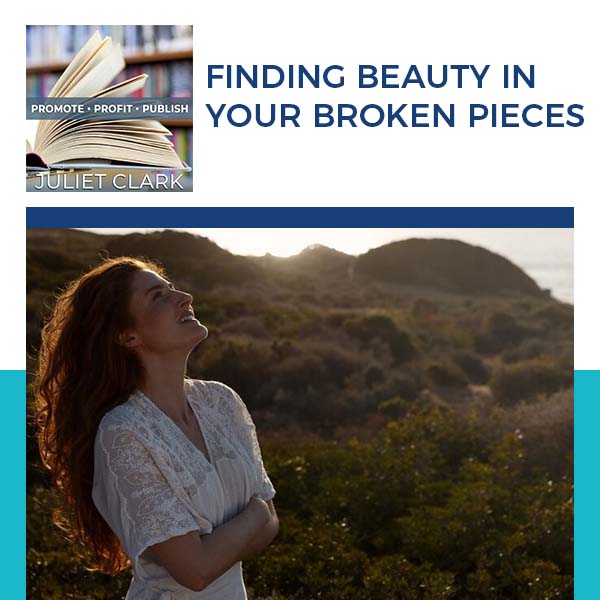


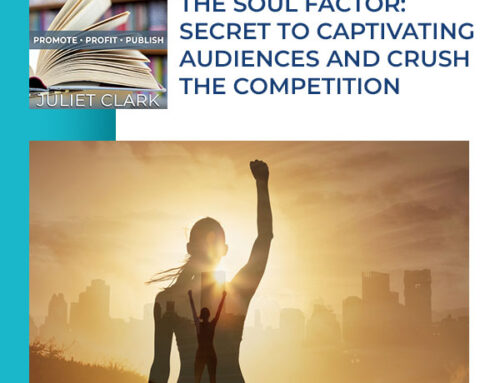
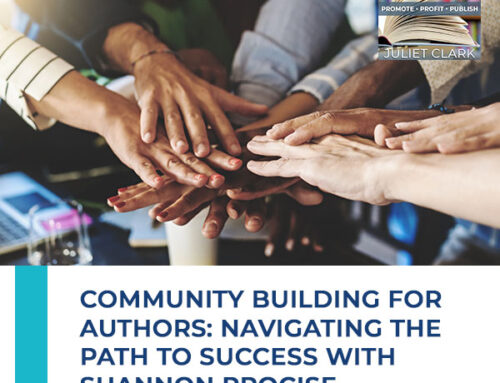
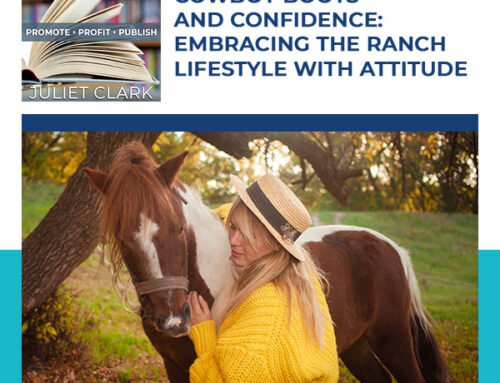


Leave A Comment